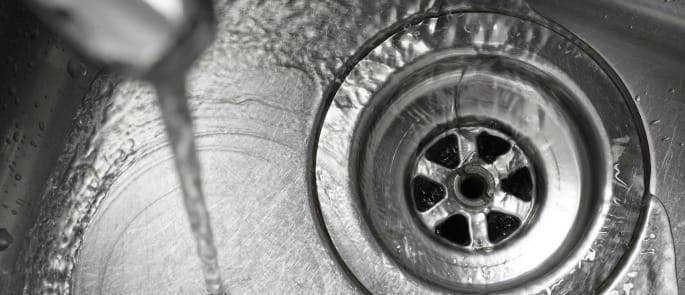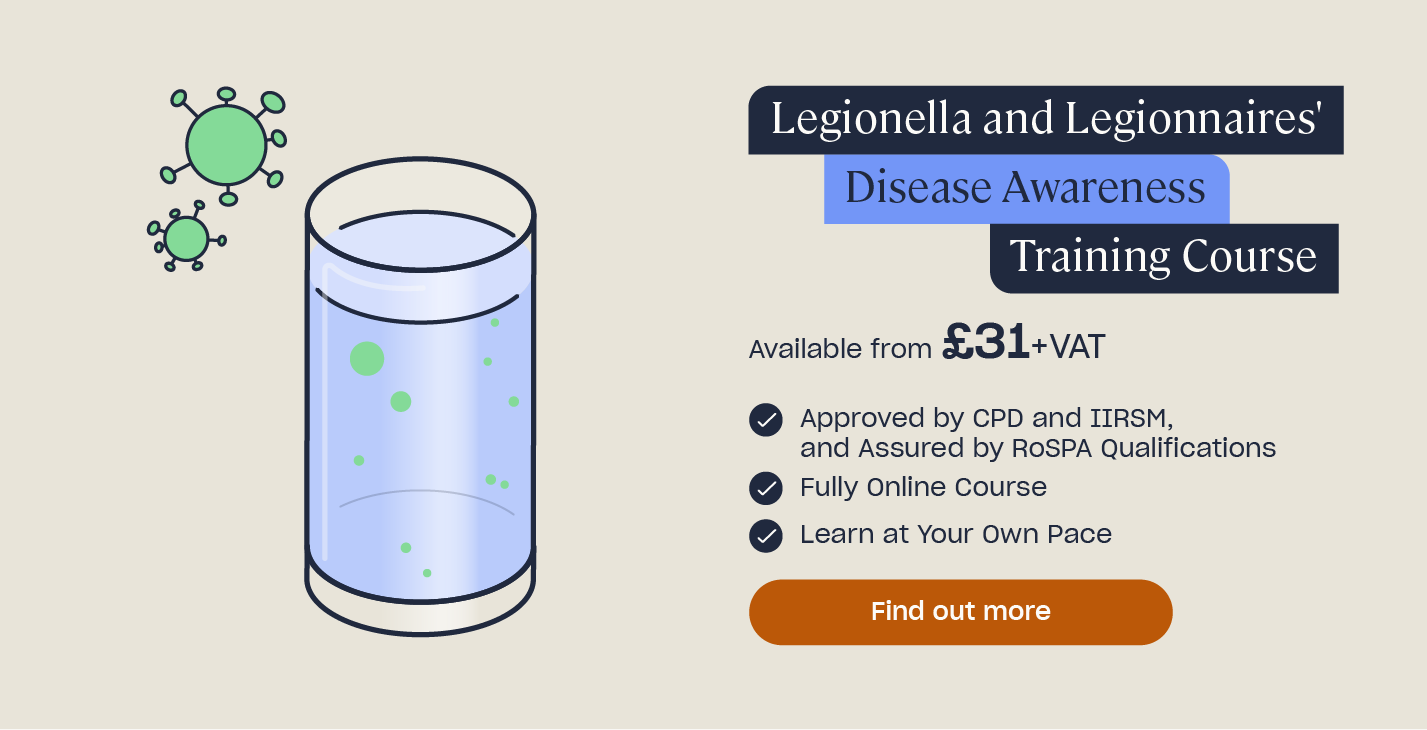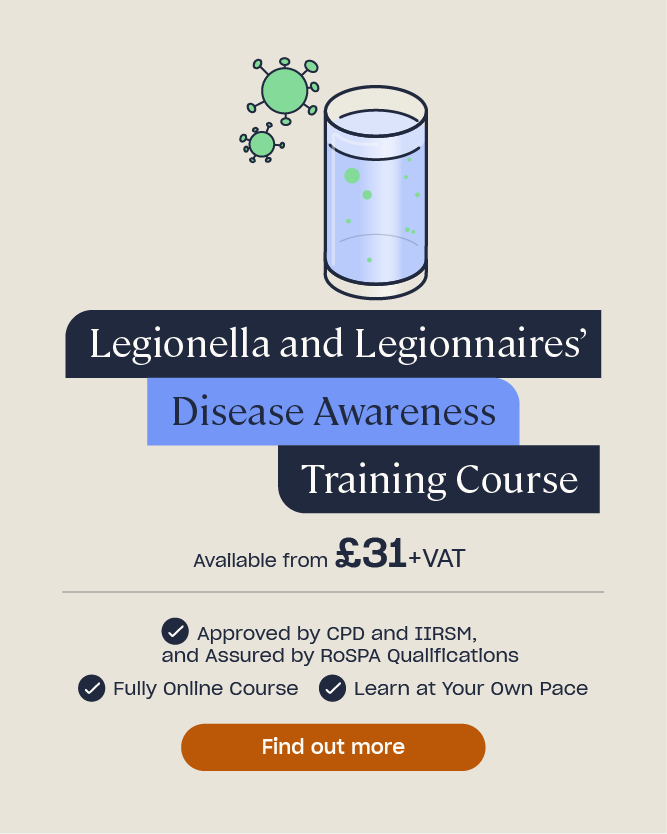Legionella Control: Managing Water Systems
Legionella is a type of pathogenic bacteria that can seriously harm people’s health. It is often found at very low concentrations in natural water sources, including rivers, lakes and reservoirs, but can also be found in purpose-built water systems.
Water systems at risk of Legionella include:
- Cooling towers.
- Evaporative condensers.
- Hot and cold water systems.
- Spa pools.
If an individual breathes in small droplets of contaminated water, they can develop one of many serious respiratory diseases, including Legionnaires’ disease, Pontiac fever and Lochgoilhead fever. These diseases are often fatal. Therefore, it’s important that you take steps to reduce the risks.
Need a Course?
High Speed Training provides an online Legionella and Legionnaires’ Awareness Training course which is designed for duty holders and contains a module dedicated to carrying out a Legionella risk assessment.
Control of Legionella Bacteria in Water Systems
Below we have outlined the steps you should take as a duty holder to control Legionella, and some control methods you can use to manage and monitor your water system.
Risk Assessment
As a duty holder, you are responsible for the health and safety of anyone on your premises. You must ensure that you take the right precautions to reduce the risk of Legionella exposure.
It is your responsibility to ensure a competent person carries out a risk assessment. You may be competent to carry one out yourself, or you may select another competent person from your organisation or from a consultancy service.
During a risk assessment, the competent person will:
- Identify the hazards. You must understand your water system and all the equipment associated with it. This helps you accurately identify areas in your system which may pose a risk from exposure to legionella.
- Decide who may be harmed, and how. You must consider who is at risk and understand what makes some people more susceptible to Legionella bacteria.
- Assess the risks and decide on control measures. The control measures you choose must effectively prevent or reduce the risk from exposure to Legionella bacteria.
- Record the results of the risk assessment. If your workplace has five or more employees, recording results is required by law. However, it’s still recommended even if you have fewer.
- Periodically review their findings. If anything relating to your water systems changes, you need to carry out a new risk assessment to identify if Legionella risks have increased.
You may also be interested in the following guide: Legionella Checklist for Landlords.
Legionella Training
During the risk assessment, you should identify who needs training. Legionella training is vital as it helps you manage Legionella in the workplace and prevent outbreaks from occurring. Therefore, you must appropriately train anyone who assesses the risks and introduces control methods. High Speed Training offer an online course on Legionella and Legionnaires’ Disease Awareness that can help those requiring training.
People who require Legionella training include:
- The duty holder. As the duty holder, you must receive appropriate training so you can assertively and soundly decide on a budget allowance for combating Legionella outbreaks. Additionally, it enables you to confidently select a responsible person and understand their duties.
- All responsible/competent persons. You must ensure you provide appropriate training to your responsible (competent) person so they can carry out their duties safely and effectively. Their duties will include carrying out Legionella risk assessments, implementing control measures and regularly reviewing their effectiveness.
- Anyone involved in introducing control methods, including contractors. You must ensure that any individual who introduces controls on your site is aware of the findings of your risk assessment. They should know what precautions to take to protect themselves and others.

Water Temperature Control
Your primary method of controlling Legionella should be temperature control. Therefore, you must understand how temperature affects Legionella bacteria. Knowing this helps you can manage the risks and ensure that you operate all water services under conditions that hinder legionella growth.
Legionella bacteria can effectively multiply between 20-45°C, provided there are nutrients available. Therefore, if you hold water between these temperatures, you increase the risk of a Legionella outbreak.
To prevent effective Legionella growth, you should:
- Store water in hot water storage cylinders (calorifiers) at 60°C or higher.
- Distribute hot water at 50°C or higher. In some water systems, a scald risk might be identified. If this is the case, you must fit thermostatic mixer valves as close as possible to the water outlet to reduce the volume of water held below 50°C between storage and outlet.
- Store and distribute cold water below 20°C.
- Identify ‘sentinel’ outlets and check the distribution temperatures at these points, on a monthly basis. ‘Sentinel’ outlets are the closest and furthest outlet to each tank or cylinder in your water system.
- Check the hot water storage cylinder temperatures every month.
- Check the cold water tank temperatures at least once every 6 months.
You must ensure that a competent person periodically checks, inspects and cleans your water system, in line with your risk assessment.
Stagnant Water
Legionella bacteria thrive in stagnant water. Therefore, you must take steps to reduce the volume of stagnant water in your system.
- Remove any dead ends in the pipe-work. Dead ends allow stagnant water to build up and provide ideal conditions for Legionella bacteria to thrive.
- Flush out infrequently used outlets at least once a week. This includes showerheads and taps.
- Clean and de-scale all shower heads and hoses at least quarterly.
- Periodically clean cold water tanks.
- Regularly drain hot water cylinders to check for signs of corrosion or debris.
What to Read Next:
- Symptoms and Treatment of Legionella and Legionnaires’ Disease
- What is ACOP L8 and How Does it Apply to Legionella?
- How to Clean Stagnant Water: Guidance on Managing Legionella Bacteria
- Legionella and Legionnaires’ Disease Awareness Training







